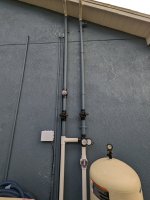- Sep 28, 2018
- 238
- Pool Size
- 13000
- Surface
- Plaster
- Chlorine
- Salt Water Generator
- SWG Type
- Pentair Intellichlor IC-40
The clickbait title is comparing the cost to run my pump at 40gpm (say for solar) for 8 hours a day at around $0.35/kwh. In reality, for most of us running at a lower speed with cheaper electric (currently around $0.13 here), that's only a small savings. However, I wanted more pressure in the spa jets and more flow through the solar without running the pump so high.
The flow was monitored via FlowVis and the power was monitored via a Klein CL900, which doesn't have the most precise range at low current (one decimal point), so the bottom range of the pumps isn't as precise.
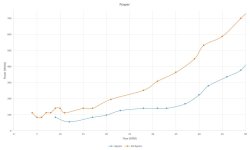
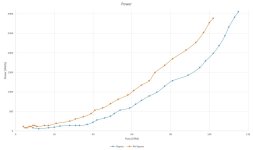
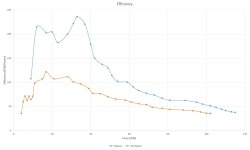
I also plumbed in a tee for a temperature sensor and one for a poor man's acid injection because I like the ideal of small doses rather than large swings every handful of days (borates helps a ton with the frequency though). I didn't have room for a check valve and a 3 way valve wouldn't work without adding a bunch of elbows. Just couldn't think of a better way to do this! Figure if I get an intellivalve for the bypass, I'll just put it on the bypass valve to open and partially close for heater mode, leaving the heater always open.
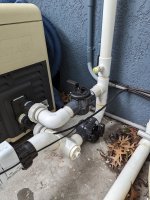
Also, the pump now has to run at about 1800RPM to close the solar VRV, which is now all the way up to 45GPM and only ~400w so $10/mo if run for 6 hours a day all month long.
The flow was monitored via FlowVis and the power was monitored via a Klein CL900, which doesn't have the most precise range at low current (one decimal point), so the bottom range of the pumps isn't as precise.



I also plumbed in a tee for a temperature sensor and one for a poor man's acid injection because I like the ideal of small doses rather than large swings every handful of days (borates helps a ton with the frequency though). I didn't have room for a check valve and a 3 way valve wouldn't work without adding a bunch of elbows. Just couldn't think of a better way to do this! Figure if I get an intellivalve for the bypass, I'll just put it on the bypass valve to open and partially close for heater mode, leaving the heater always open.

Also, the pump now has to run at about 1800RPM to close the solar VRV, which is now all the way up to 45GPM and only ~400w so $10/mo if run for 6 hours a day all month long.


